11 Mid-Funnel Marketing Tactics To Improve Conversion Rates
Reading Time: 7 minutes
What do marketers talk about?
How they acquire leads/visitors and how they convert them, i.e., TOFU and BOFU.
What they don’t usually talk much about is how TOFU leads are converted into BOFU leads.
The focus is usually on the top and the bottom of the funnel, with the middle often seen as an afterthought. This is a mistake!
The middle of the funnel is the critical stage where prospects actively evaluate their options, gather information, and weigh the benefits and drawbacks of different solutions. It is at this middle stage that the potential for conversion is highest, as leads are closer to making a purchase decision.
By failing to address the middle of the funnel, marketers miss out on valuable opportunities to nurture and engage leads, ultimately hampering their conversion rates. Neglecting the MOFU can lead prospective customers to lose interest or seek alternative solutions.
In this article, we will explore the importance of the middle of the funnel and discuss proven strategies to effectively engage and convert TOFU leads into BOFU customers.
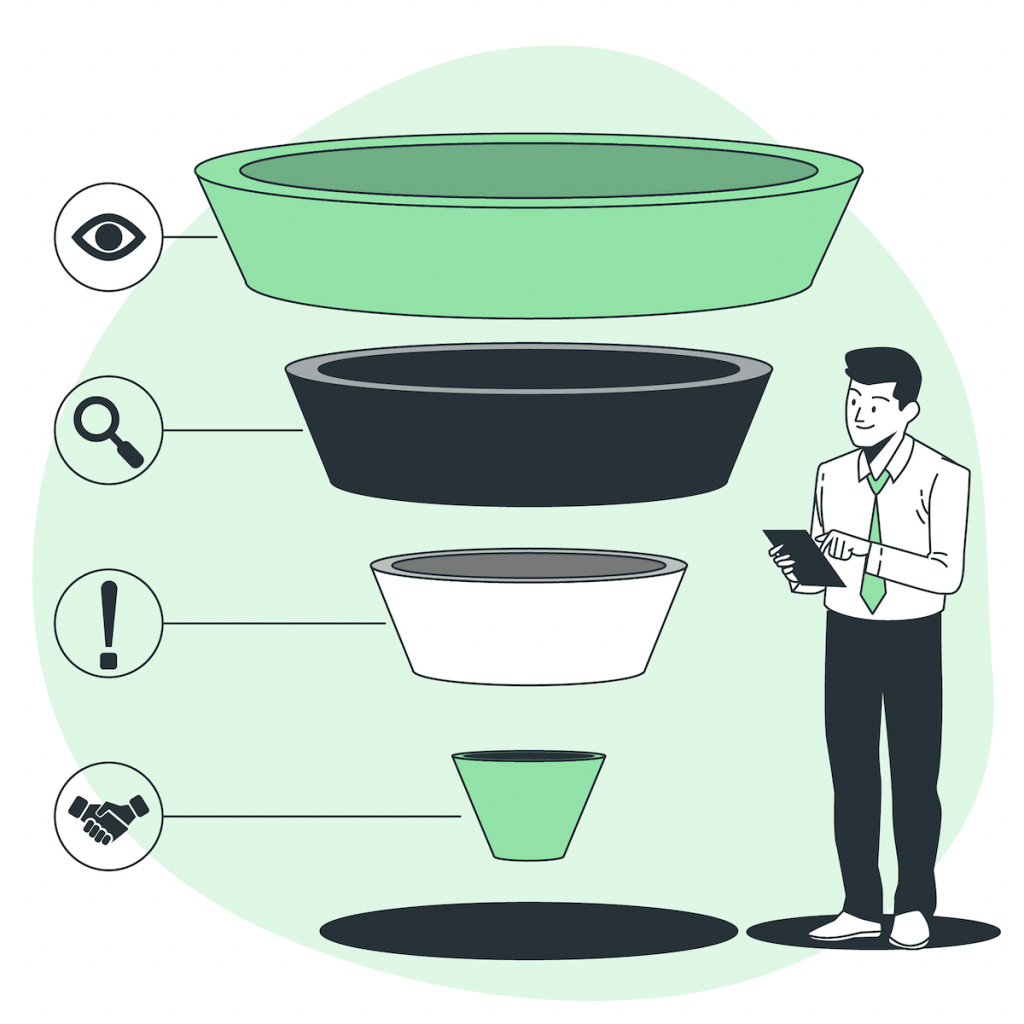
What is the Mid-Funnel Exactly?
The mid-funnel, also known as the consideration stage, varies in length and complexity depending on the nature of the brand and its target audience. For some businesses, particularly in the B2C ecommerce space, the mid-funnel may be relatively short and straightforward. In these cases, the lead or visitor moves swiftly from the awareness stage to the final steps of conversion, often taking just a few minutes to complete the process, such as making a purchase or subscribing to a service.
On the other hand, in B2B sales or complex purchasing decisions, the mid-funnel can be a prolonged journey that spans weeks or even months. This extended timeframe allows potential customers to thoroughly evaluate their options, conduct research, compare solutions, and gather more information before committing to a final decision. It is during this period that businesses need to strategically engage with leads and provide them with the necessary resources and support to move them closer towards conversion.
Essentially, the mid-funnel encompasses all the activities, touchpoints, and interactions that take place between the initial acquisition of a lead or visitor and their progression to the very end of the funnel where the final steps for conversion occur. It is crucial to recognize that the mid-funnel is not a one-size-fits-all stage, but rather a dynamic and tailored process that can vary greatly depending on industry, target audience, and specific buyer behavior.
What Happens If You Do Not Pay Enough Attention to the Middle of the Funnel?
Neglecting the middle of the funnel can lead to a range of detrimental effects for businesses, impacting their overall marketing and sales performance.
- Mid-Funnel Drop-Offs: Without sufficient attention to the mid-funnel, businesses often experience a high rate of drop-offs in the conversion journey. Potential customers may lose interest, get overwhelmed, or seek alternative solutions as they navigate through the consideration stage. This drop-off can result in a significant loss of potential revenue and customer opportunities.
- Poor Conversion Rates: Limited focus on the middle of the funnel often translates to lower conversion rates. As leads progress through the funnel, the lack of effective engagement and nurturing can cause them to stall or abandon their journey, leading to fewer conversions and missed sales opportunities. This ultimately impacts the bottom line and overall business growth.
- Sales and Marketing Misalignment: Inadequate attention to the mid-funnel can contribute to misalignment between sales and marketing efforts. Marketing might generate TOFU leads, but without a well-defined mid-funnel strategy, sales teams may receive poorly qualified or unprepared leads. This misalignment can create friction between departments, hinder the smooth progression of leads, and negatively impact the entire conversion process.
- Poorer Quality Leads: Insufficient mid-funnel engagement can result in an overall decrease in lead quality. Leads that have not been nurtured through the consideration stage may be less informed, less committed, and less likely to convert into paying customers. This can lead to a higher customer acquisition cost and reduced return on investment for marketing and sales efforts.
The implications of neglecting the mid-funnel are significant and can hinder a business’s ability to effectively convert leads into customers. By recognizing and addressing these potential outcomes, businesses can proactively implement strategies to optimize the mid-funnel and prevent these negative effects, ultimately driving better conversion rates and improving overall business performance.
Marketing Tactics to Strengthen Your Mid-Funnel
To strengthen your mid-funnel and effectively engage with leads, there are several marketing tactics you can employ:
Use Social Proof
Integrate customer testimonials, reviews, and case studies prominently on your website, within your email campaigns, and on social media. Showcase real-life examples of how your product or service solved a problem or delivered value to customers. These provide prospects with real-life examples of how others have benefited from your offering, helping to build trust and credibility.
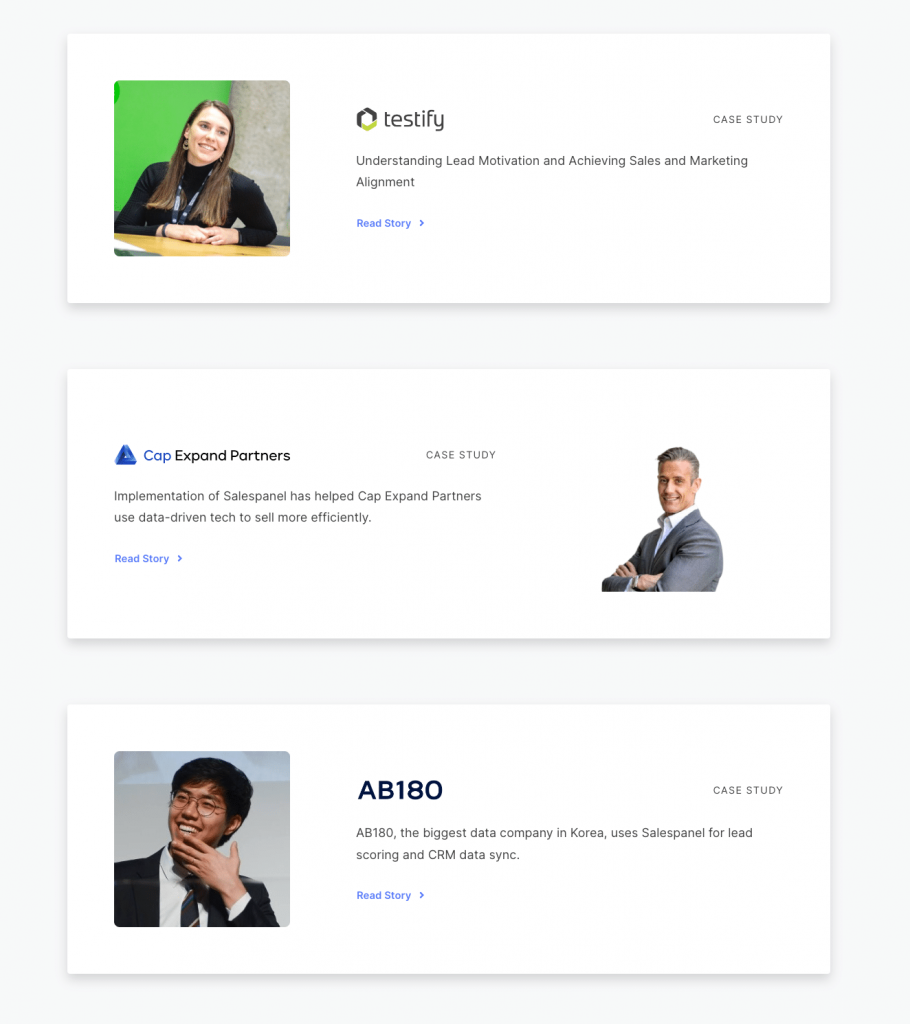
Implement Customer Journey Tracking
Utilize platforms like Salespanel to track interactions prospects have with your brand across various touchpoints. This involves mapping out all possible customer journey paths and identifying key activities and behaviors that indicate interest or intent. Analyzing this data helps refine your marketing strategies to better align with the needs and interests of your prospects, enabling personalized follow-ups and content delivery.
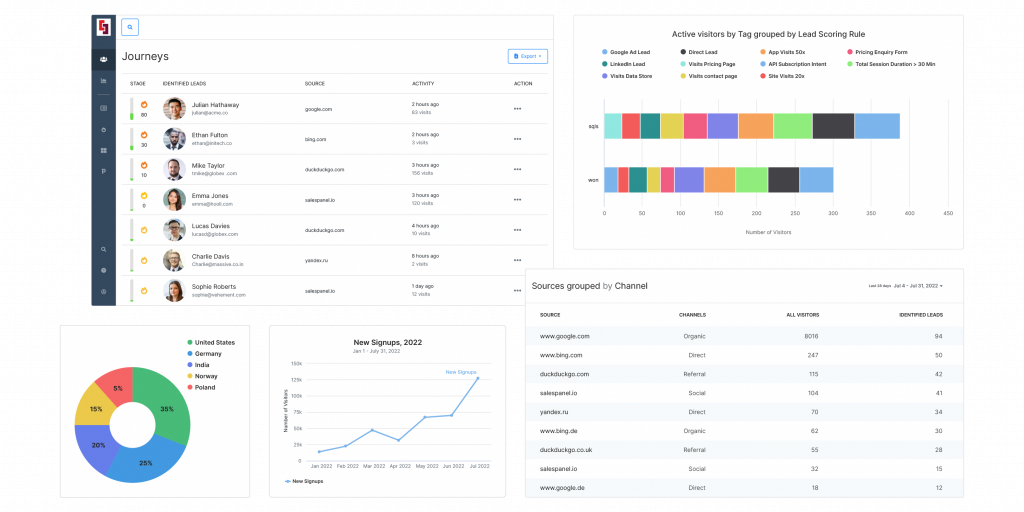
Personalize the Experience
Personalization goes beyond simply addressing prospects by their names. Leverage behavioral data, such as web page visits, content downloads, or email opens, combined with target profile data, such as job titles or industry, to understand the individual needs and preferences of your leads. Tailor your messaging, content recommendations, and offers to address those specific needs, increasing the relevance and effectiveness of your mid-funnel engagement.
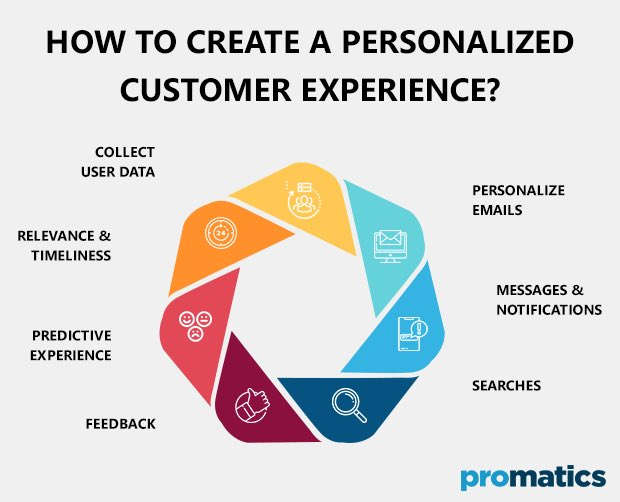
Engage Through Newsletters and Email Drip Campaigns
In your newsletters and email drip campaigns, focus on delivering valuable content and insights that align with the interests and pain points of your leads. Segment your email lists based on the stage of the mid-funnel each lead is in, and design personalized email workflows that provide relevant information, address objections, and nudge prospects closer to conversion.
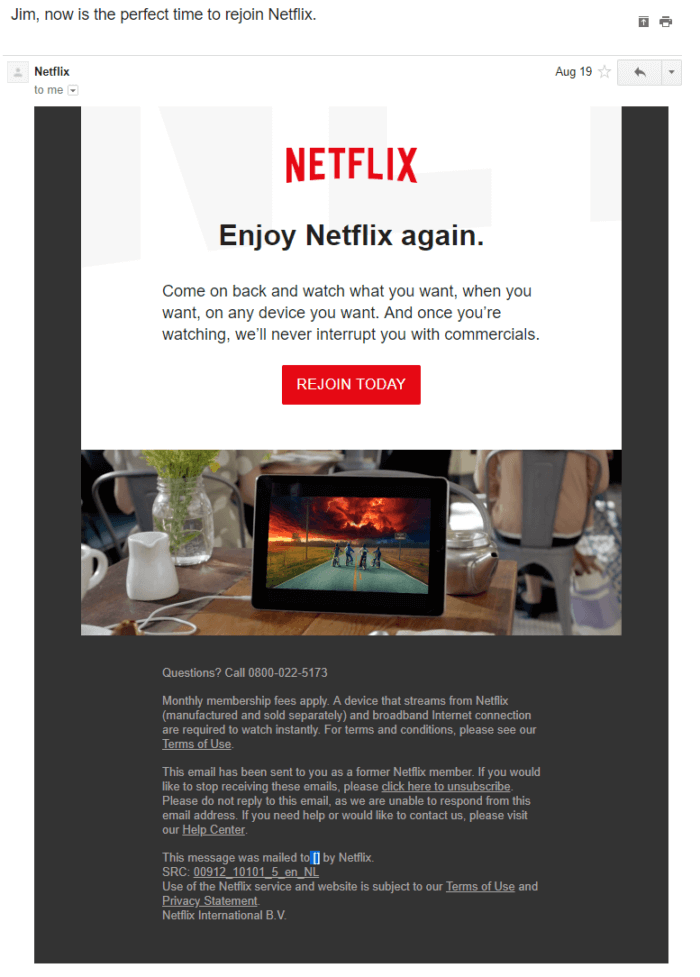
Create High-Value Content
Develop comprehensive, authoritative content that addresses the common questions, concerns, and interests of your target audience. Use various formats, such as blogs, white papers, eBooks, and webinars, to cater to different preferences and stages of the decision-making process. This content should position your brand as a thought leader and a go-to resource in your industry.
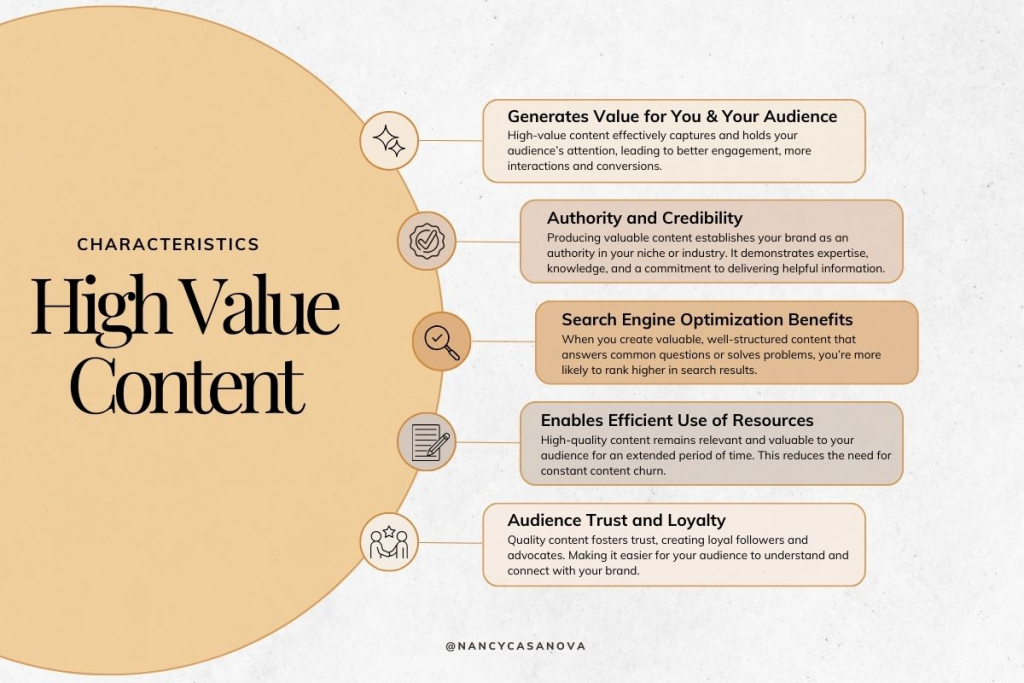
Facilitate Demos and Trials
Demos and trials allow prospects to experience the value of your offering firsthand. In addition to providing guided demos or access to trial versions of your product, offer proactive support and personalized assistance during the trial period. This helps build trust and reduces any barriers they may have in making a purchasing decision.
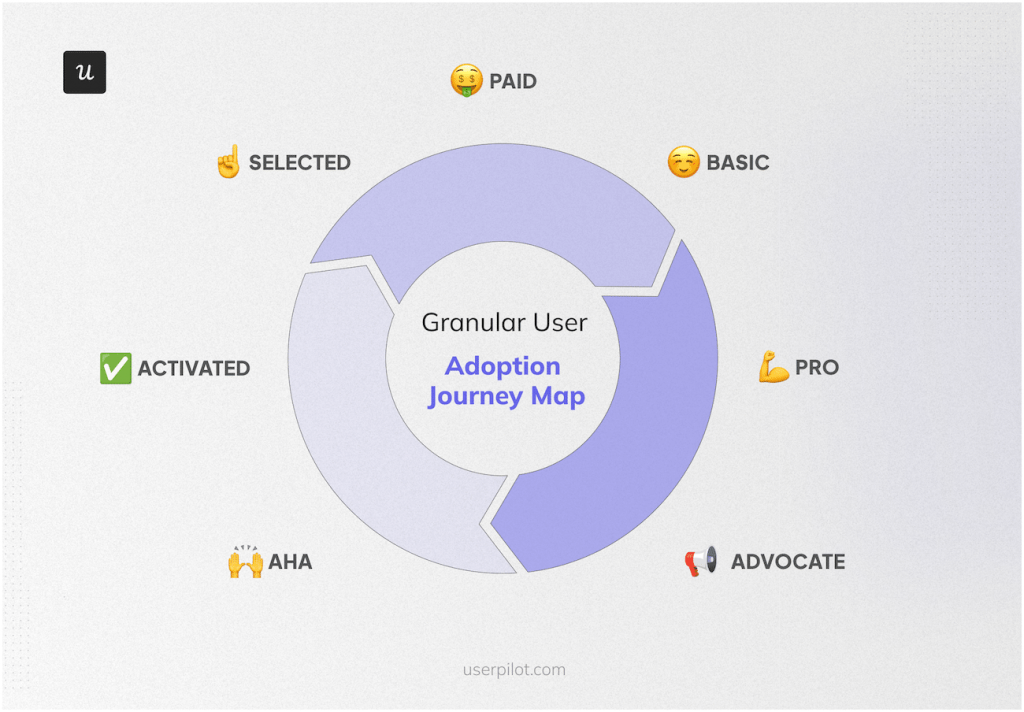
Implement Segmentation and Lead Scoring
With Salespanel or similar tools, segment leads based on firmographic attributes (such as company size or industry) and behavioral data (such as engagement with specific content or repeated visits to pricing pages). Assign lead scores based on the likelihood of conversion to prioritize your sales team’s follow-up efforts and increase the efficiency of the handoff between marketing and sales.
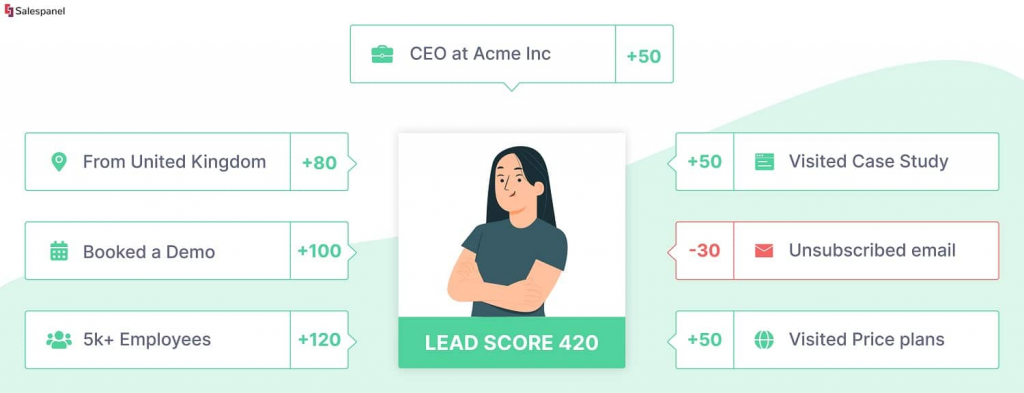
Create a Detailed Helpdesk
Build a comprehensive online helpdesk or FAQ section that provides answers to common questions, troubleshooting guides, and detailed product or service information. This resource allows prospects to independently find the information they need to move forward in their decision-making process, reducing barriers to conversion.
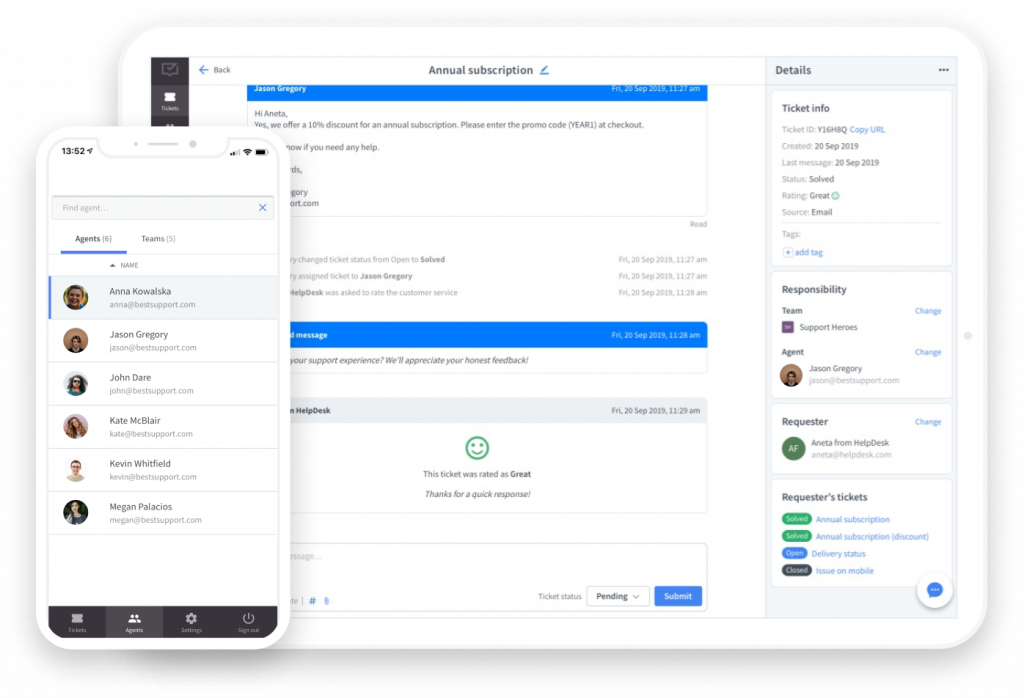
Create Tutorial Videos
Produce engaging and informative tutorial videos that demonstrate how your product works or how to make the most of your services. These videos can help demystify complex features, showcase benefits, and provide a clear value proposition to potential customers.
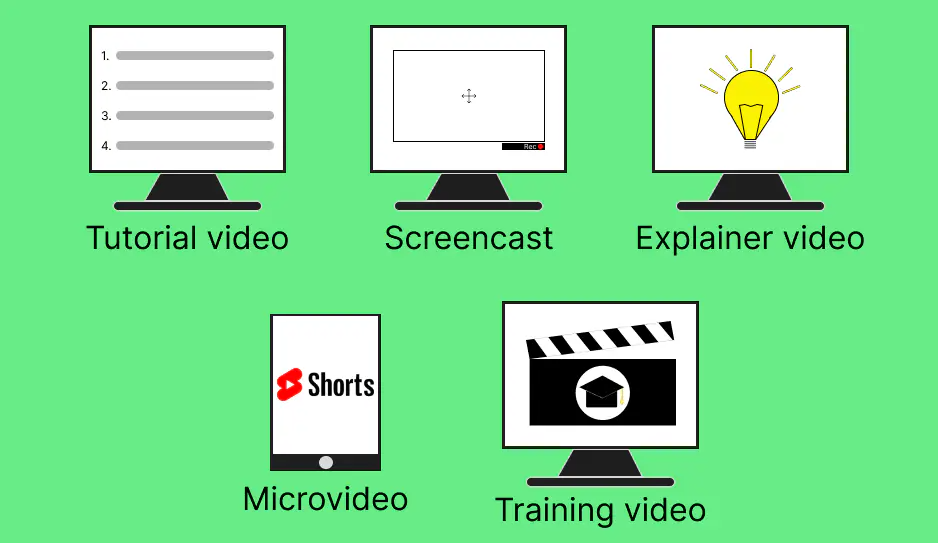
Help and Engage with Prospects via Live Chat
Implement live chat functionality on your website to offer real-time assistance. This immediate form of communication can significantly improve the customer experience by providing quick answers to questions, guiding prospects through the buying process, and addressing any concerns that might prevent them from moving forward.
Use Heatmap and Session Analysis Tools
Employ tools like Hotjar or VWO to analyze how visitors interact with your website. Heatmaps can show where users click, scroll, and spend time, while session recordings can reveal user navigation patterns and potential friction points. This information is invaluable for optimizing the layout, content, and user pathways on your site to improve the mid-funnel experience.
By enriching your mid-funnel marketing efforts with these detailed tactics, you can create a more engaging, informative, and effective journey for your prospects, significantly increasing the likelihood of conversion and customer acquisition.
Final Thoughts
The journey from lead acquisition to conversion is pivotal, yet the middle of the funnel (MOFU) is often overlooked. This oversight can lead to decreased engagement, poorer conversion rates, and a disconnect between marketing and sales efforts. However, a well-nurtured MOFU can significantly improve the quality of leads and increase the likelihood of conversion by providing prospects with the necessary information and engagement to make informed decisions.
Key strategies like leveraging social proof, personalizing experiences, creating high-value content, and employing analytics to track customer journeys are essential for strengthening the MOFU. These tactics ensure a seamless transition from awareness to decision-making, enhancing the effectiveness of your marketing strategy across the funnel.
By focusing efforts on enriching the MOFU, businesses can unlock the full potential of their marketing to drive growth, improve conversions, and foster lasting customer relationships.
Sell more, understand your customers’ journey for free!
Sales and Marketing teams spend millions of dollars to bring visitors to your website. But do you track your customer’s journey? Do you know who buys and why?
Around 8% of your website traffic will sign up on your lead forms. What happens to the other 92% of your traffic? Can you identify your visiting accounts? Can you engage and retarget your qualified visitors even if they are not identified?
